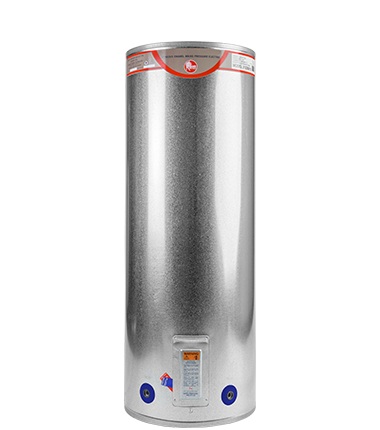Unlock Peak Efficiency: Mastering Your Apricus Heat Pump
A heat pump is a highly efficient device designed to provide heating, cooling, and hot water for your home. Among the many options available, the Apricus heat pump stands out for its innovation, energy efficiency, and eco-friendliness. However, to truly unlock its potential, proper use and maintenance are key. Here’s a guide to mastering your Apricus heat pump and achieving peak performance.
Understanding How Your Apricus Heat Pump Works
The Apricus heat pump uses the principles of thermodynamics to transfer heat rather than generate it, making it much more energy-efficient than conventional heating systems. It can absorb heat from the outside air, even at low temperatures, and transfer it inside your home. In summer, the process reverses, allowing it to cool your home by extracting heat from inside and expelling it outside.
The beauty of the Apricus heat pump is its ability to draw energy from renewable sources, significantly reducing your carbon footprint. It works with minimal electrical input, cutting down on energy consumption and utility bills. With proper use, this appliance can deliver an excellent balance of comfort and efficiency.
Optimizing Settings for Maximum Efficiency
1. Set the Right Temperature:
To get the best performance from your Apricus heat pump, setting the temperature correctly is critical. For heating, a thermostat setting of around 20–22°C (68–72°F) during the winter is optimal. For cooling, aim for around 24–26°C (75–78°F) in summer. These settings provide a balance between comfort and energy savings.
Using the heat pump's programmable features to adjust the temperature when you’re away or asleep can further save energy. By lowering the temperature by a few degrees at night or during the day when no one is home, your system will work less, extending its life and reducing energy consumption. More information on Apricus Heat Pump Manual.
2. Use Zoning Features:
Apricus heat pumps are often equipped with zoning capabilities, allowing you to direct heating or cooling only to rooms that need it. By controlling which areas of your home are conditioned, you can save energy by not heating or cooling unused spaces. Ensure your zoning system is correctly configured to maximize these savings.
Maintenance Tips for Long-Term Efficiency
1. Clean or Replace Filters Regularly:
The air filters in your Apricus heat pump play a crucial role in maintaining good air quality and efficient operation. Clogged or dirty filters can impede airflow, forcing the system to work harder to maintain temperature, which in turn increases energy usage and can shorten the life of the unit.
Depending on how frequently your system runs, check and clean your filters every month or two. If your heat pump is running constantly, or if you live in an area with high dust or pollen levels, you may need to clean or replace filters more frequently.
2. Inspect the Outdoor Unit:
The outdoor unit of your Apricus heat pump is responsible for absorbing or expelling heat, depending on the season. Keep it free from debris like leaves, dirt, and snow. Ensure that there is at least two feet of clearance around the unit for proper airflow.
Regularly inspect the outdoor coil for any visible dirt buildup or damage. Cleaning the coil at least once a year, or as needed, will improve the heat pump’s efficiency.
3. Schedule Professional Maintenance:
While some maintenance tasks can be handled on your own, others are best left to professionals. Scheduling an annual service check for your heat pump ensures that all components are functioning correctly and that there are no issues like refrigerant leaks or electrical problems.
During a professional tune-up, the technician will clean the system, check refrigerant levels, inspect the electrical connections, and ensure the thermostat is calibrated correctly. This will not only help you avoid costly repairs down the road but also ensure that your system is running at peak efficiency.
Using Apricus Heat Pump for Water Heating
In addition to space heating and cooling, the Apricus heat pump can also be used to heat water, making it a versatile and eco-friendly choice for your home’s water heating needs. By using the same energy-saving technology, it can provide hot water efficiently, helping to further reduce your overall energy usage.
For optimal water heating, set the temperature to 50–60°C (122–140°F). Anything higher will consume more energy and may lead to faster wear on your system. Regularly inspect your hot water tank and ensure the system is well-insulated to prevent heat loss.
Consider Adding Solar for Ultimate Efficiency
Pairing your Apricus heat pump with solar panels can take your energy savings to the next level. Solar energy can power the heat pump, allowing it to operate with even less reliance on the grid. This combination reduces your carbon footprint and cuts down on energy bills, making your home more sustainable.
Conclusion: Unlock the Full Potential of Your Apricus Heat Pump
Mastering your Apricus heat pump is all about optimizing settings, performing regular maintenance, and integrating it with other energy-saving technologies like solar panels. By following the tips outlined above, you’ll not only increase your system’s efficiency but also enjoy a more comfortable and eco-friendly home.
Taking the time to understand and properly manage your heat pump will yield long-term savings and a smaller environmental impact, making it an investment that benefits both your wallet and the planet.
Contact Us
Hot Water Solutions
3d Taid Place, Rosedale, Auckland
0800497658
Social Links:
https://www.facebook.com/Hot-Water-Solutions-100885308035357/
https://www.instagram.com/pete_hotwatersolutions/?hl=en
https://www.youtube.com/@HotWaterSolutions_NZ




Comments
Post a Comment